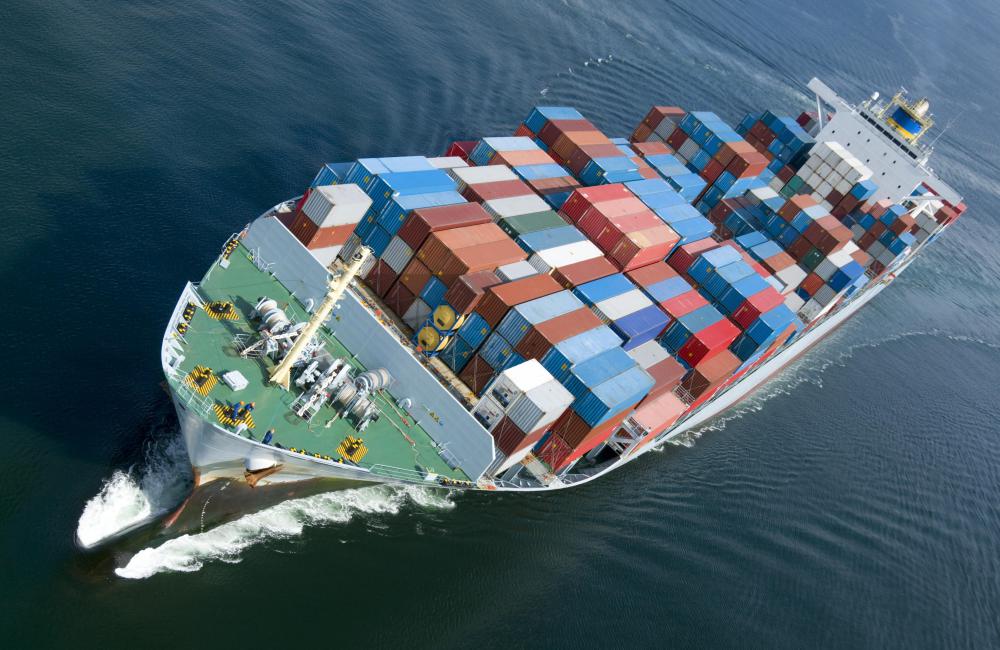At WiseGEEK, we're committed to delivering accurate, trustworthy information. Our expert-authored content is rigorously fact-checked and sourced from credible authorities. Discover how we uphold the highest standards in providing you with reliable knowledge.
What Is Export-Led Growth?
Export-led growth is an economic approach that many developing nations attempt to put in place to modernize their societies and increase standards of living. It is based on the principle of finding a market for something on the international stage that cannot be easily or efficiently supplied by other nations. As the developing nation makes a name for itself in this market, it is able to bring in positive cash flow that can fuel the import of goods and services that it cannot produce for itself. Good examples of export-led growth nations are the petroleum-exporting nations of the Middle East, and rapidly developing economies such as India and China.
An economic strategy of export-led growth is usually attempted with either manufactured goods and information services, or raw materials. The former offers more flexibility to expand exports, as raw materials sell at reduced prices and eventually become scarce commodities. In the decades of the 1960s up to the 2000s, Asian-sector nations have focused on manufactured goods exports, whereas some Latin American and African nations have tended towards raw materials. While the former approach has led to greater internal productivity and influxes of cash in the past, a downturn in global economic conditions as of 2011 now puts this model for growth into doubt.

China as a preeminent example of export-led growth has been successful with the policy since 1978 because of its access to negotiations through the World Trade Organization (WTO), an abundance of cheap labor, and an aggressive internal program of industrialization. While China's growth rate continues at a high level, its very low consumption rate per household and reinvestment of profits by corporations has kept it from developing a strong consumer economy to modernize lifestyles in general. Export-led growth in China has mostly benefited the government in terms of tax collection and Chinese corporations in terms of paying off investments in capital goods, while per-capita incomes have remained low. China's high savings rate, therefore, which is paralleled by the export-led growth model in India, ends up being invested in foreign markets instead of directly benefiting the citizenry.

Key international trade factors have led to the success of the export-led growth model for many nations. These include an open US marketplace to imported goods and services as the largest consumer economy in the world, the reduction of trade barriers through globalization processes, and a standardization expansion across many industries so that goods and services could take on universal utility. Changes in these factors has begun to put the system in doubt, as the US and world economy undergoes a protracted downturn as of 2011, and excess production capacity for manufactured goods now exists in many developing nations that have adopted this economic strategy. Other factors said to be limiting export-led growth include rising energy costs and increasing scarcity of natural resources, as well as a slow down in technological innovation in electronics, which has been a primary area fueling such growth.
Developing nations such as India are approaching the limits to the old export model with a hybrid approach to a solution — by exporting information services, which require very limited resources and support long-term growth models. Financial account imbalances between developing export-led growth nations that produce manufactured goods and industrialized consumer nations with large debt loads that buy them are also seen as unsustainable in the long term. This is forcing developing nations to focus more on domestic growth as export avenues dry up, and consumer nations to cut back on wasteful spending. The United Nations Conference on Trade and Development (UNCTAD) sees higher wages in developing nations and reductions in unemployment figures overall as the key conditions to be addressed if export-led growth is to continue to be a successful model for the developing world.
AS FEATURED ON:
AS FEATURED ON:












Discussion Comments
The United States had, in essence, an export led economy for years. Following World War II, American factories were running at full capacity and adding more as Europe and Japan were both rebuilding and in need of the types of products the U.S. made in abundance.
Many economists have argued, convincingly, that one of the problems the U.S. has is that it's manufacturing base has been undercut by nations such as China that can build things and do it with cheaper labor than is available in America. So, the question is this -- after a nation has gone through a period where it has built an economy based on exports, what happens when the manufacturing base declines as other nations expand their production?
Post your comments